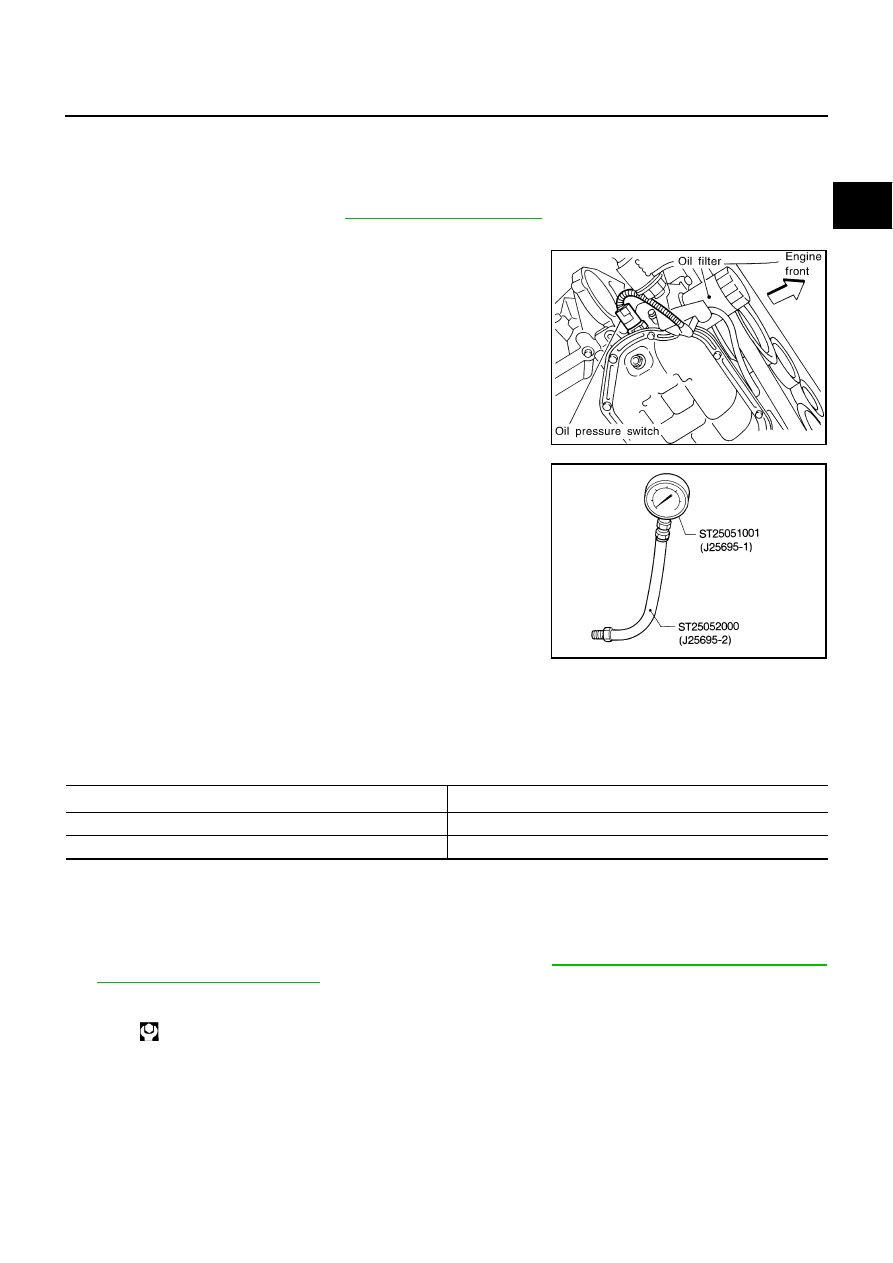Nissan Murano Z50 (2005 year). Manual - part 190

ENGINE OIL
LU-7
C
D
E
F
G
H
I
J
K
L
M
A
LU
Revision: 2005 August
2005 Murano
OIL PRESSURE CHECK
WARNING:
●
Be careful not to get burn yourself, as engine oil may be hot.
●
Oil pressure check should be done in “Parking position”.
1.
Check the engine oil level. Refer to
2.
Remove splash guard (RH).
3.
Disconnect harness connector at oil pressure switch, and
remove oil pressure switch using deep socket (commercial ser-
vice tool)
CAUTION:
Do not drop or shock oil pressure switch.
4.
Install pressure gauge [SST] and hose [SST].
5.
Start the engine and warm it up to normal operating temperature.
6.
Check the engine oil pressure with engine running under no-load.
NOTE:
When the engine oil temperature is low, the engine oil pressure becomes high.
Engine oil pressure [Engine oil temperature at 80
°
C (176
°
F)]
If difference is extreme, check engine oil passage and oil pump for engine oil leaks.
7.
After the inspections, install oil pressure switch as follows:
a.
Remove old liquid gasket adhering to oil pressure switch and mating surface.
b.
Apply liquid gasket and tighten oil pressure switch to the specification.
Use Genuine RTV Silicone Sealant or equivalent. Refer to
.
SLC240B
SLC926
Engine speed (rpm)
Approximate discharge pressure [kPa (kg/cm
2
, psi)]
Idle speed
More than 98 (1.0, 14)
2,000
More than 294 (3.0, 43)
Oil pressure switch:
: 14.8 N·m (1.5 kg-m, 11 ft-lb)